19th Century Painting Warlies Country House Essex
- Regular price
- £1,250.00
- Sale price
- £1,250.00
- Regular price
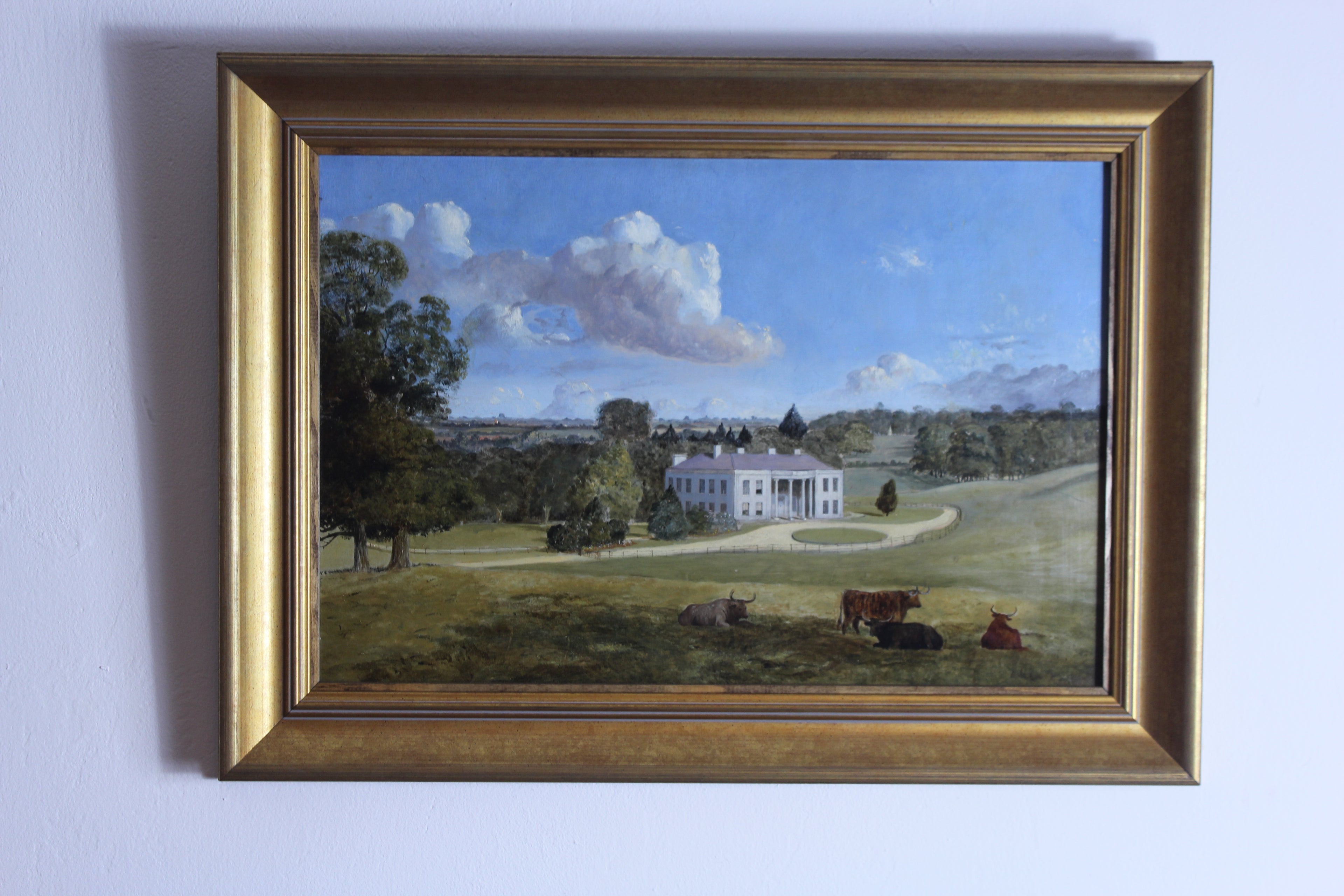
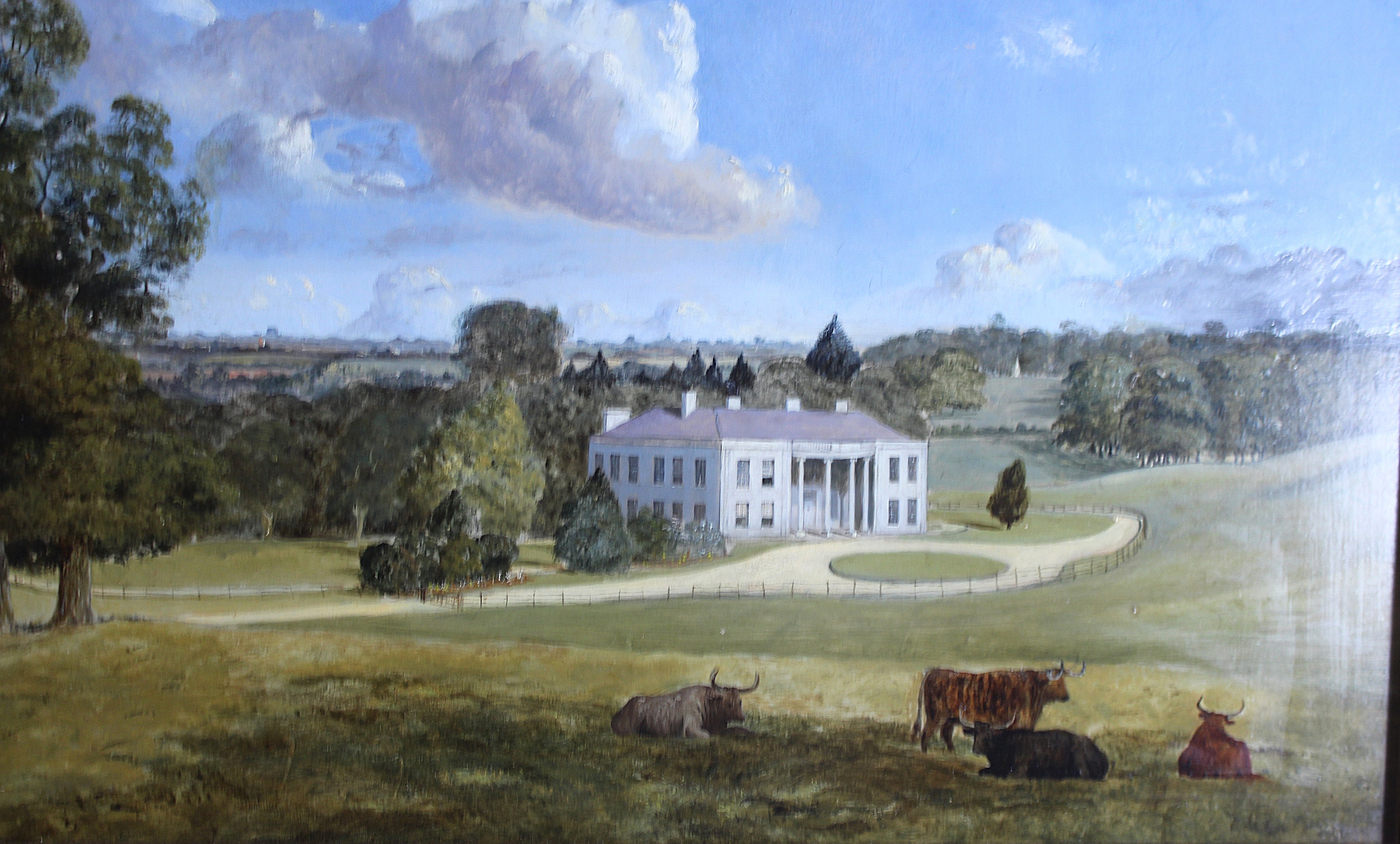
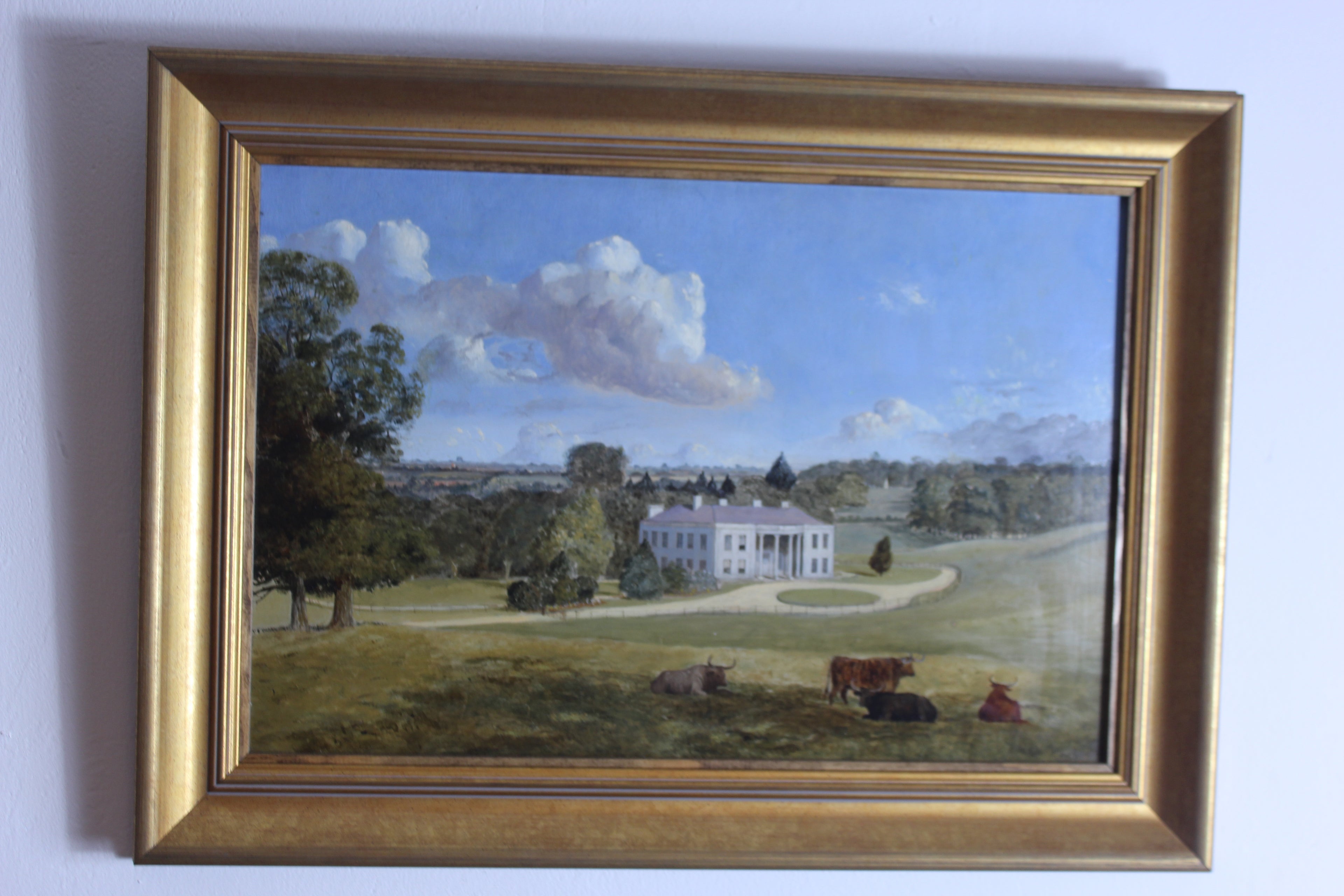
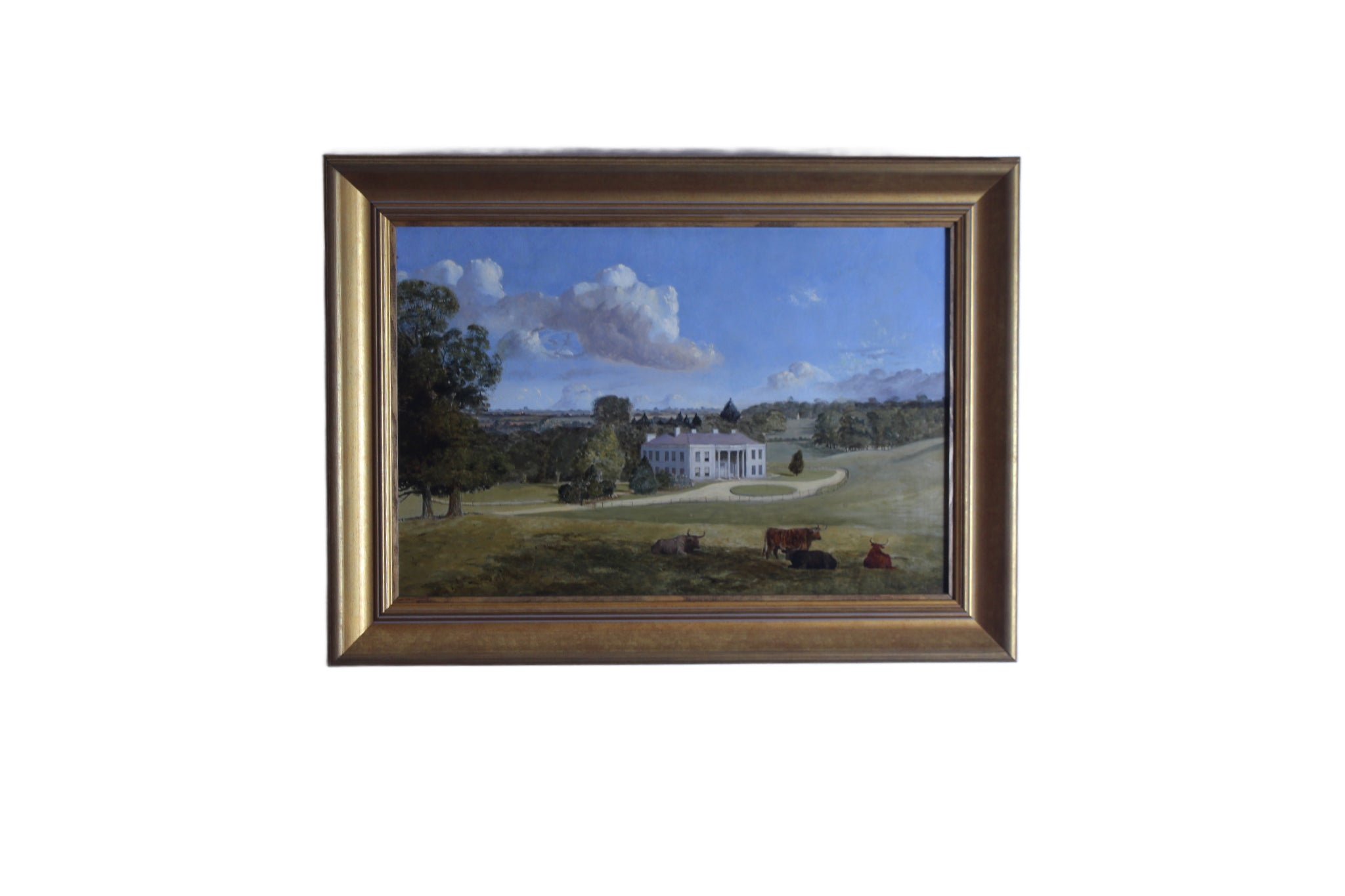
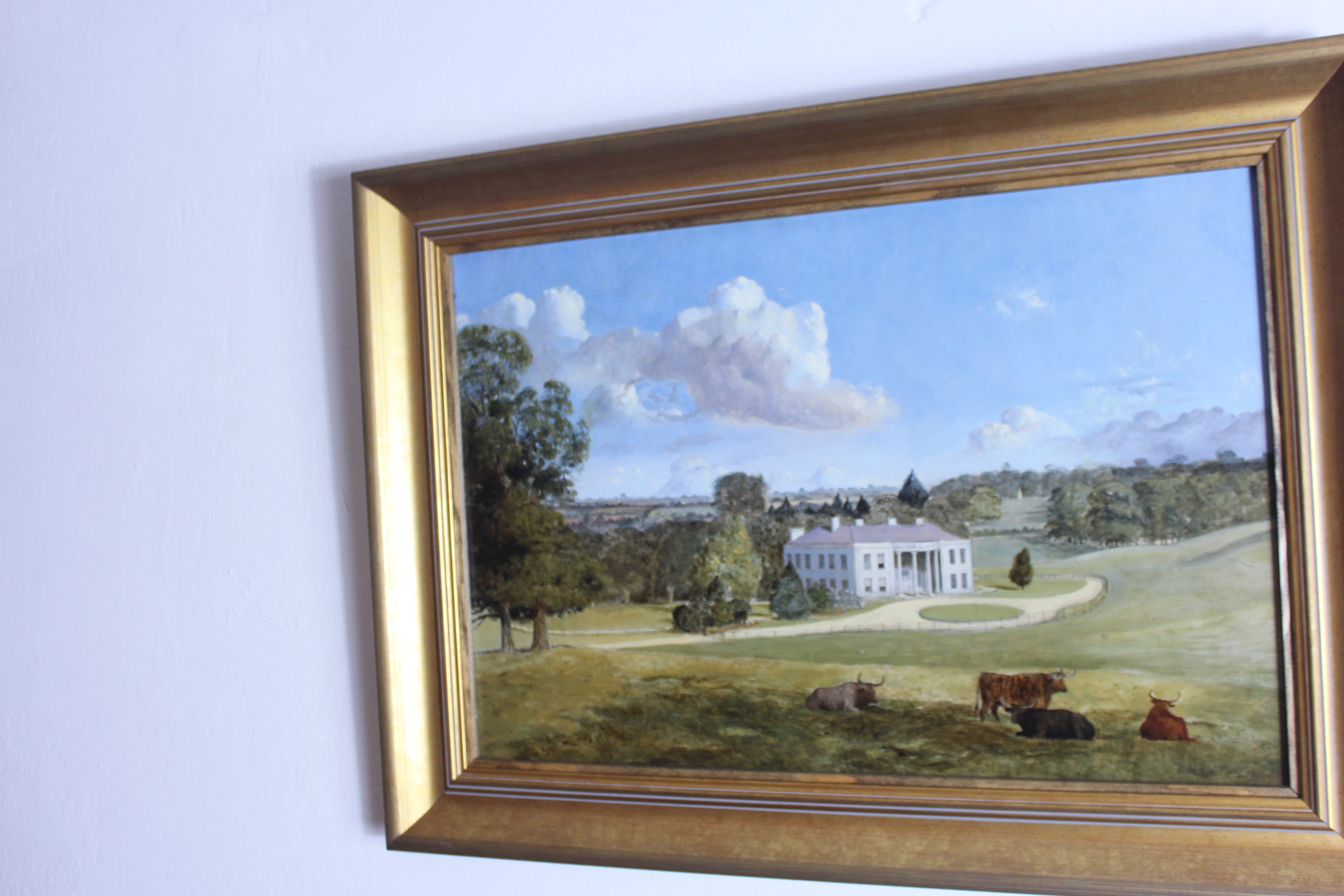
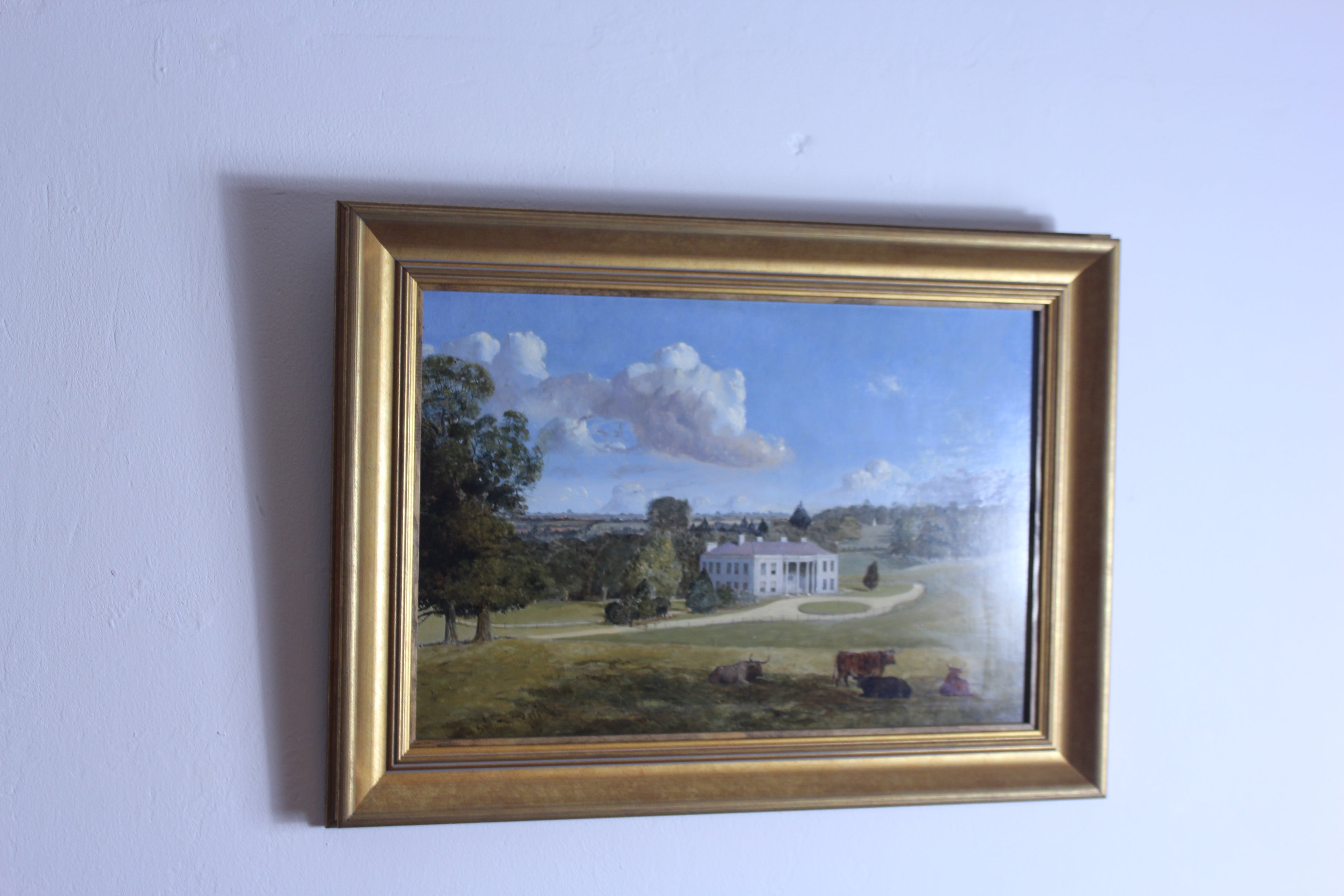




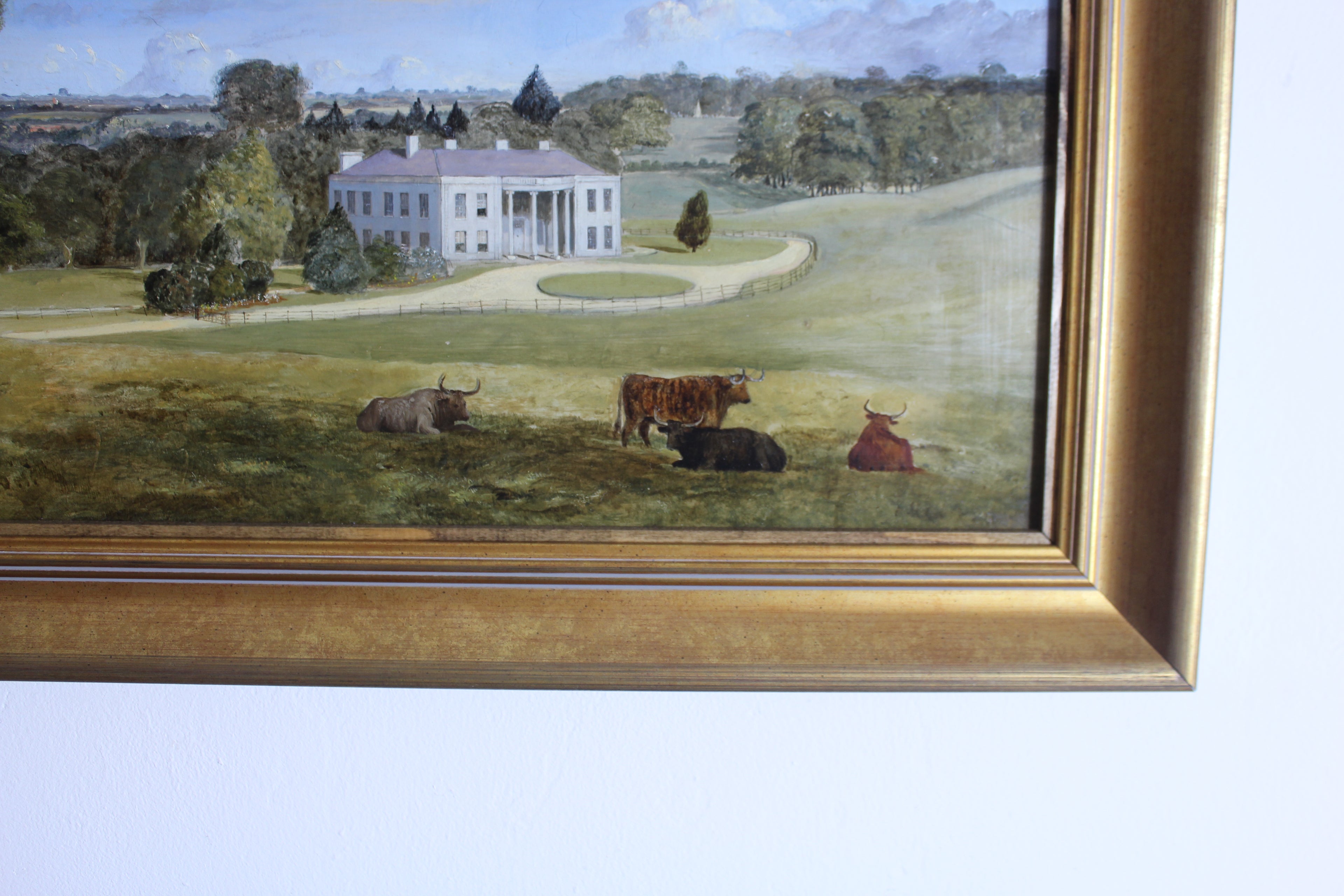

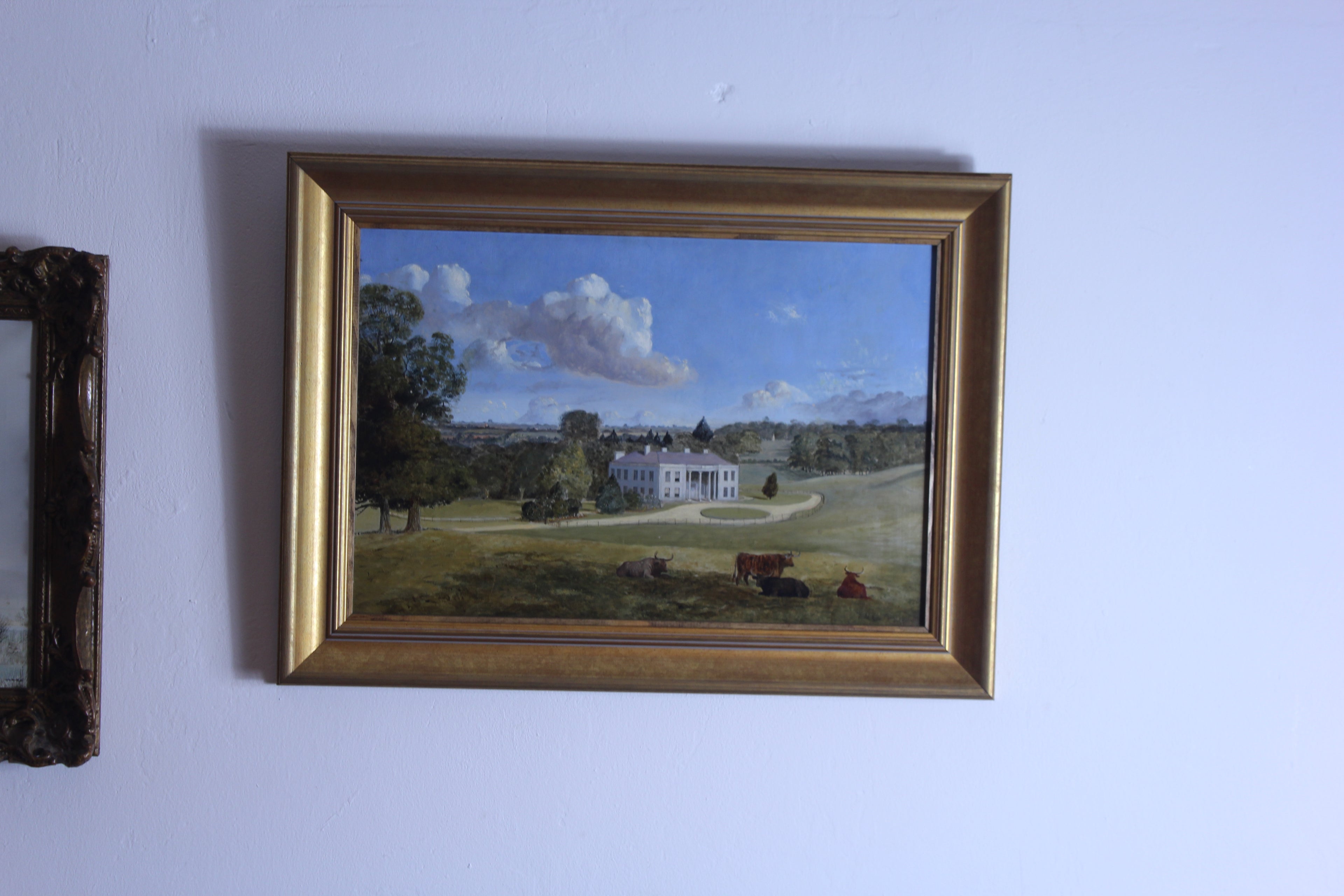
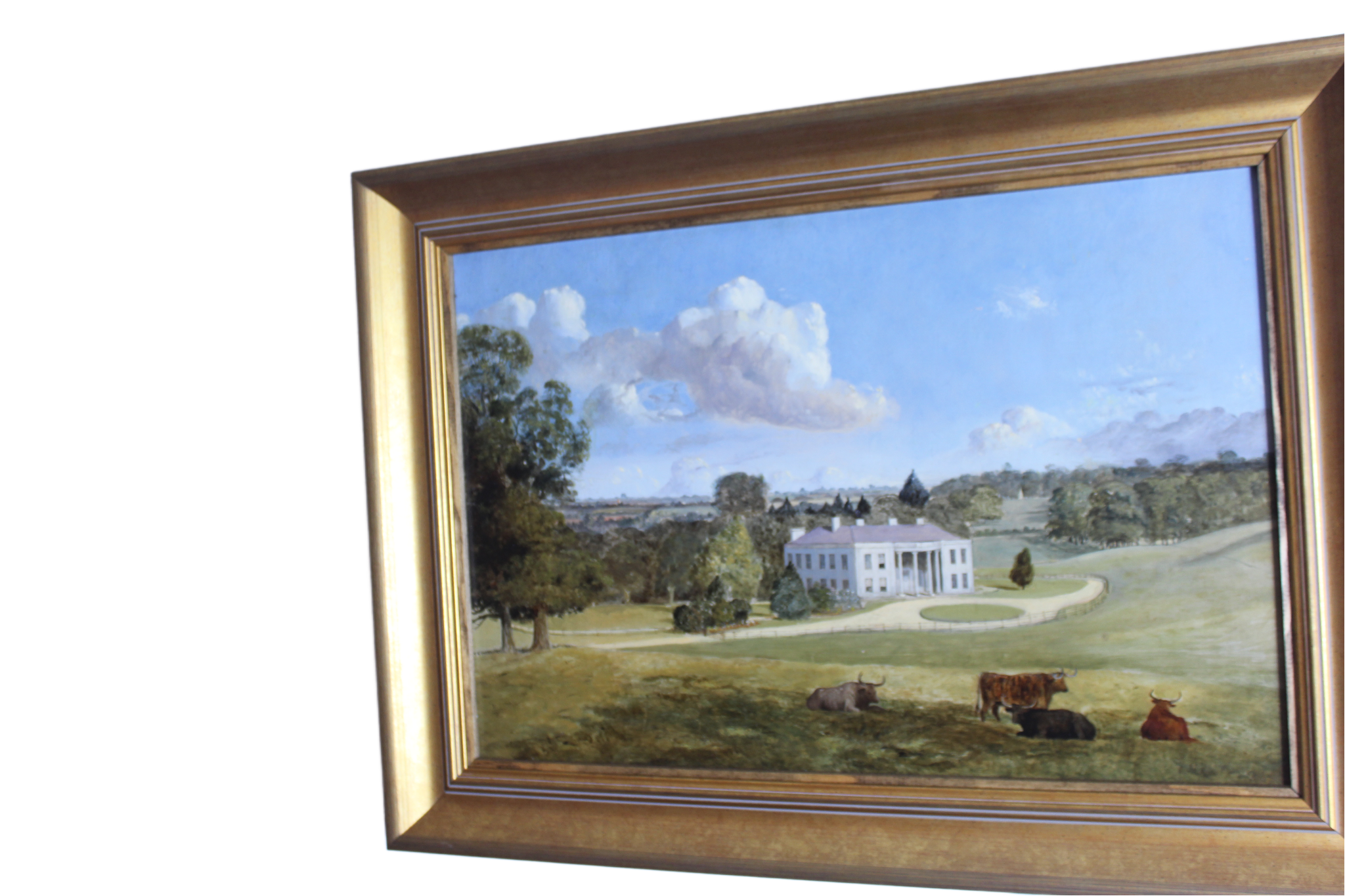
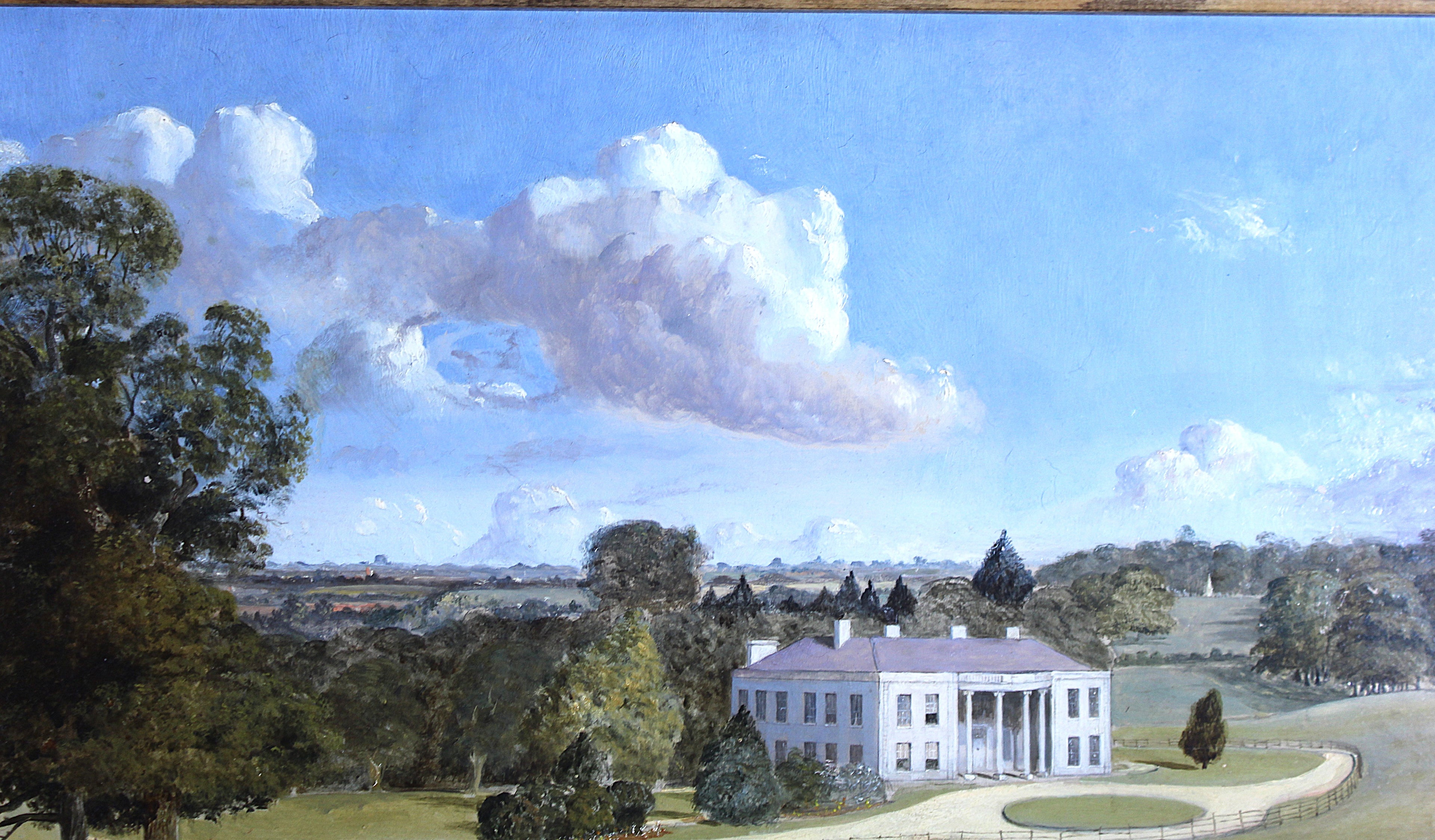
19th-century oil painting of Warlies House, Essex
This exceptional 19th-century oil painting of Warlies Park House came to us through a private estate in Suffolk, where it had hung quietly for generations above a drawing room fireplace. The work is believed to have been commissioned or acquired by a relative of the Buxton family, notable owners of Warlies House, and remained in their family line through inheritance.
The artist, though currently unnamed, demonstrates a practised hand and a clear connection to the Romantic and Realist movements. The scene captures the house not as an architectural study, but as a lived-in landscape, where the estate’s neoclassical symmetry blends with the gentle rhythm of cattle and countryside.
What makes this painting so compelling is not just its technical quality, but its rare documentation of Warlies House during its mid-Victorian prominence. At the time, it was home to Thomas Fowell Buxton, reformer, whose influence shaped British social history. This painting, with its calm palette and pastoral framing, offers a serene counterpoint to the societal debates unfolding within the very walls it depicts.
Now preserved in excellent condition, this piece serves as both art and archive — a visual echo of England’s countryside grandeur and the quiet dignity of rural life. It is a genuine piece of historical storytelling, ready to enrich any traditional interior or British heritage collection.
This captivating mid-19th-century oil on panel painting exemplifies the idyllic charm of pastoral landscapes from the period, featuring a detailed composition that highlights both the natural beauty and rural life of Warlies Park House in Waltham Abbey, Essex. A magnificent depiction of a serene countryside scene, it showcases a harmonious balance of nature and architecture, where cows graze peacefully in the foreground, lending a sense of tranquillity and nostalgia to the work. The central focus of the painting is the historic Warlies Park House, an elegant country estate framed by gently rolling hills and expansive green fields, illustrating the grandeur of the English countryside.
The artist’s keen eye for detail is evident in the careful rendering in this oil painting of Warlies House, Essex, of the estate’s neoclassical architecture, complete with white columns and symmetrical windows that reflect the architectural style of 19th-century country houses. The pastoral scene with cows in the foreground draws inspiration from Victorian rural landscapes, where cattle often symbolised prosperity and the timeless relationship between humans and nature. The use of warm earth tones in the grassy plains, contrasted with the vibrant blues and whites of the sky, creates a striking visual depth and atmospheric quality. The winding path leading to the house adds a dynamic compositional element, guiding the viewer’s gaze from the peaceful rural setting to the stately home beyond.
This historic English countryside painting embodies the artistic traditions of the Romantic and Realist movements, which celebrated the beauty of nature and rural simplicity. Paintings of this style were particularly popular in the Victorian era, reflecting the growing appreciation for the countryside as a symbol of stability and harmony during the Industrial Age. In this piece, the soft brushwork and careful attention to light and shadow evoke a calm, sunlit day, where the clouds cast gentle shadows across the estate and fields, enhancing the sense of depth and realism.
19th-century painting of Warlies House, Essex
The painting also offers a significant depiction of Warlies Park Estate, an important landmark in Waltham Abbey, Essex, known for its historical and architectural value. Such artworks, often commissioned or created to commemorate noble estates, serve as important records of the period’s architectural heritage and rural environments. The country estate artwork is masterfully balanced with pastoral elements, making it an ideal representation of a time when nature and human achievement were celebrated together in art.
This piece would appeal to collectors and admirers of 19th-century English countryside painting, particularly those interested in Victorian rural scenes and historic properties. Whether as a centrepiece in a traditional room or as a refined addition to an art collection, it offers timeless charm and historical significance. Its portrayal of cattle in a rural landscape aligns with the enduring themes of prosperity and rustic life. For those seeking pastoral landscape oil paintings for sale, this work stands as a remarkable example of the genre, blending architectural elegance with bucolic serenity.
Overall, this detailed landscape painting of Warlies Park House in Waltham Abbey is a quintessential Victorian-era rural landscape, reflecting both the grandeur of English estates and the peaceful beauty of the natural world. Its combination of historic architecture, rich colour palette, and lifelike representation of livestock makes it an evocative tribute to the splendour of the British landscape art tradition.
oil painting of Warlies's House, Essex

















